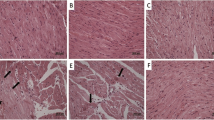Abstract
The present study investigated the prophylactic influence of melatonin against cyclophosphamide-induced oxidative stress in mouse tissues. Lipid peroxidation, reduced glutathione (GSH), glutathione disulphide (GSSG), glutathione peroxidase (GSH-Px) and serum phosphatase levels were analyzed in brain, spleen liver, lungs, kidney and testes. Fifteen days oral administration with melatonin (0.1 mg/kg bw per day) before treatment checked the augmentation of the level of lipid peroxidation, blood GSSG and acid phosphatase caused by an acute treatment with a radiomimetic drug, cyclophosphamide (75 mg/kg bw). Cyclophosphamide-induced depletion in the level of GSH, GSH-Px and alkaline phosphatase was made up statistically significant by chronic melatonin administration given orally. The results indicate the antioxidative properties of melatonin resulting into its prophylactic property against the cyclophosphamide-induced biochemical alterations. The finding support the idea that melatonin is a potent free-radical scavenger and antioxidant.
Similar content being viewed by others
References
Allegra M, Reiter RJ, Tan DX, Gentile G, Tesoriere L, Livrea MA. The chemistry of melatonin's interaction with reactive species. J Pineal Res. 2003;34:1–10.
Anderstam B, Vaca C, Ringdahl MH. Lipid peroxide level in a murine adenocarcinoma exposed to hyperthermia: the role of glutathione depletion. Radiat Res. 1992;132:296–300.
Anisimov VN, Popovich IG, Zabezhinski MA. Melatonin and colon carcinogenesis: I. Inhibitory effects of melatonin on development of intestinal tumors induced by 1, 2-dimethylhydrazine in rats. Carcinogenesis. 1997;18:1549–53.
Blask DE. Melatonin in oncology. In: Yu, HS and Reiter RJ, eds. Melatonin, biosynthesis, physiological effects, and clinical applications. Boca Raton, FL: CRC Press; 1993:447–75.
Bueg JA, Aust SD. Methods in enzymology, Vol. 52. New York: Academic Press; 1978:302–14.
Cerutti P. Peroxidant states and tumor production. Science. 1985;227:337–81.
Comporti M. Glutathione depleting agents and lipid peroxidation. Chem Phys Lipids. 1987;45:143–69.
De Salvia R, Fiore M, Aglitti T, Festa F, Ricordy R, Cozzi R. Inhibitory action of melatonin on H2O2-and cyclophosphamide-induced DNA damage. Mutagenesis. 1999;14:107–12.
Ellman GL, Archs. Tissue sulfhydril groups. Biochem Biophys. 1959;82:70–7.
Gul M, Kutay FZ, Temocin S, Hanninen O. Cellular and clinical implication of glutathione. Ind J Exp Biol. 2000;38:625–34.
Halliwell B. Free radicals, antioxidants and human disease: curiosity, cause or consequence? Lancet. 1994;344:721–4.
Hatoroft WS. Atheroma begins at birth. In: Kummerow FA, eds. Metabolism of lipids as related to atherosclerosis. IL, USA: Springfield; 1965:18–25.
Hochstein P and Utley H. Hydrogen peroxide detoxification by glutathione peroxidase and catalase in rat liver homogenate. Mol Pharmacol. 1968;4:574–9.
Kale RK, Sitaswad SL. Radiation induced lipid peroxidation in liposomes. Radiat Phys Chem. 1990;36:361–4.
Kaya H, Oral B, Ozguner F, et al. The effect of melatonin application on lipid peroxidation during cyclophosphamide therapy in female rats. Zentralbl Gynakol. 1999; 121:499–502.
Leyko W, Bartosz G. Membranes effect of ionizing radiation and hyperthermia. Int J Radiat Biol. 1986;49:743–70.
Lopez-Gonzalez MA, Guerrero JM, Torronteras R, Osuna C, Delgado F. Ototoxicity caused by aminoglycosidase is ameliorated by melatonin without interfering with the antibiotic capacity of the drugs. J Pineal Res. 2000;28:26–33.
Lopez-Gonzalez MA, Guerrero JM, Torronteras R, Osuna C, Delgado F. Ototoxicity caused by cisplatine is ameliorated by melatonin and other antioxidants. J Pineal Res. 2000;28:73–80.
Manda K, Bhatia AL. Melatonin-induced reduction in age-related accumulation of oxidative damage in mice. Biogerontology. 2003a; 4(3):133–9.
Manda K, Bhatia AL. Melatonin's anti-aging role: a study on LPO in mice tissues. Ind J Gerontol. 2003b;16:211–17.
Meister A, Andersen ME. Glutathione. Ann Rev Biochem. 1983;52:711–60.
Mohn GR, Ellenberger. Genetic effect of cyclophosphamide, ifosfamide and trofosfamide. Mutat Res. 1976;32:334–60.
Muscari MR, Caldarera CM, Guarnieri C. Age-dependent production of mitochondrial hydrogen peroxide, lipid peroxides and fluorescent pigments in the rat heart. Basic Res Cardiol. 1990;85:172–8.
Pryor WA, Godber SS. Noninvasive measures of oxidative stress status in humans. Free Rad Biol Med. 1991;10:177–84.
Raleigh JE. Radioprotection of membranes. Phamacol Ther. 1985;39:109–13.
Reiter RJ. Functional pleiotropy of the neurohormone melatonin: antioxidant protection and neuroendocrine regulation. Front Neuroendocrinol. 1995;16:383–415.
Reiter RJ. Melatonin and human reproduction. Ann Med. 1998;30:103–8.
Reiter RJ, Tan DX, Manchester LC, Qi W. Biochemical reactivity of melatonin with reactive oxygen and nitrogen species: a review of evidence. Cell Biochem Biophys. 2001;34:237–56.
Schneider EL, Sternberg H, Tice RR. The analysis of cellular replication. Proc Natl Acad Sci USA. 1977;74:2041–4.
Sies H. Oxidative stress. London: Academic Press; 1985:1–8.
Sies H and Stahl W. Vitamin E and C, β-carotene and other carotenoids as antioxidants. Am J Clin Nutr. 1995;62:1315S–21S.
Tan DX, Manchester LC, Reiter RJ, Qi WB, Karbownik M, Calvo JR. Significance of melatonin in antioxidative defense system: reactions and products. Biol Signals Recept. 2000;9:137–59.
Waldhauzer F, Kovacs J, Reiter E. Age-related changes in melatonin levels in humans and its potential consequences for sleep disorders. Exp Gerontol. 1998;33:759–72.
Yu HS, Tsin ATC, Reiter RJ. Melatonin: history, biosynthesis and assay methodology. In: Yu HS, Reiter RJ, eds. Melatonin, biosynthesis, physiological effects, and clinical applications. Boca Raton: CRC Press; 1993:1–16.
Zhdanova IV, Cantor ML, Leclair OU. Behavioral effect of melatonin treatment in non-human primates. Sleep Res Online. 1998;1:114–18.
Author information
Authors and Affiliations
Corresponding author
Rights and permissions
About this article
Cite this article
Manda, K., Bhatia, A. Prophylactic action of melatonin against cyclophosphamide-induced oxidative stress in mice. Cell Biol Toxicol 19, 367–372 (2003). https://doi.org/10.1023/B:CBTO.0000013342.17370.16
Issue Date:
DOI: https://doi.org/10.1023/B:CBTO.0000013342.17370.16




